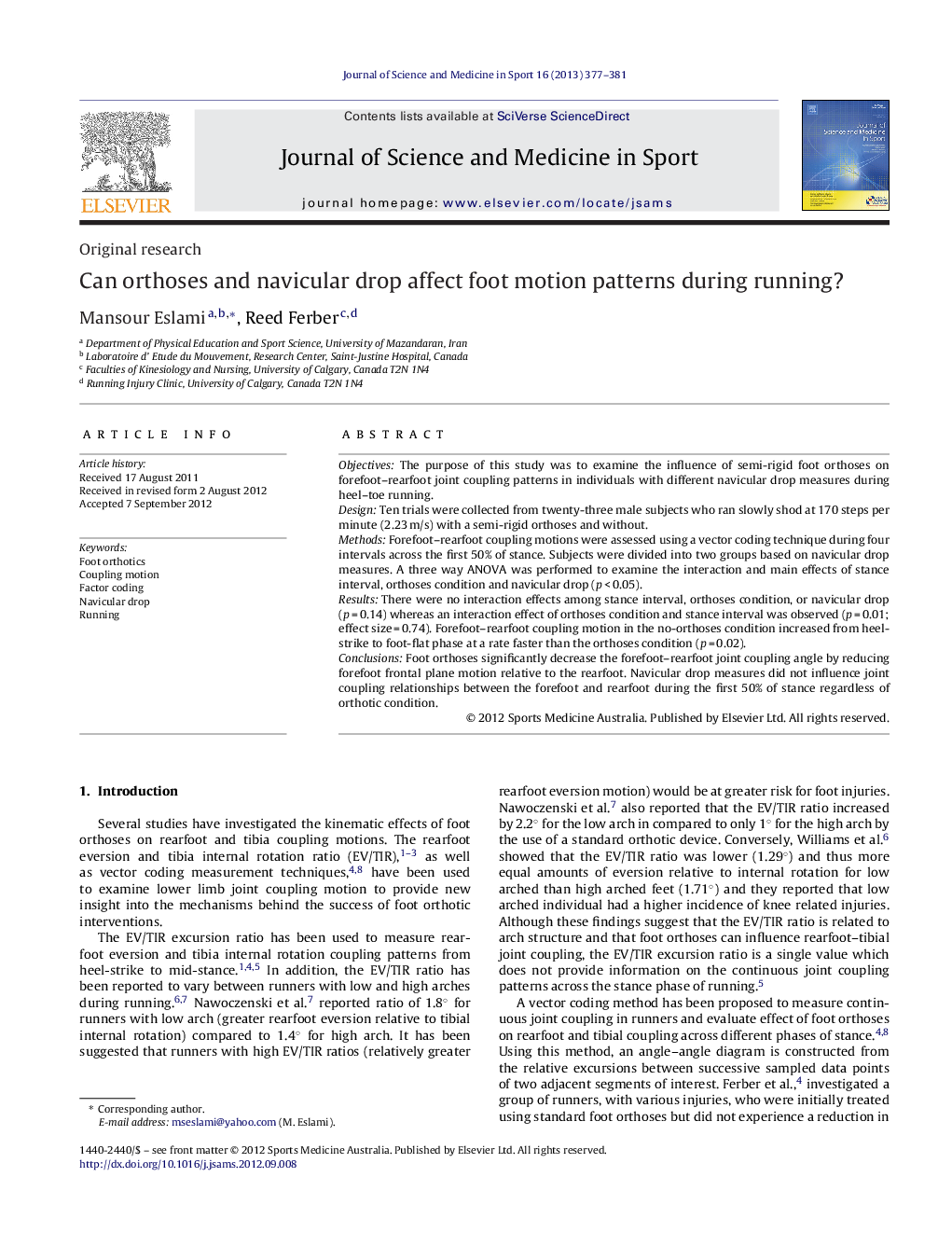| Article ID | Journal | Published Year | Pages | File Type |
|---|---|---|---|---|
| 2701472 | Journal of Science and Medicine in Sport | 2013 | 5 Pages |
ObjectivesThe purpose of this study was to examine the influence of semi-rigid foot orthoses on forefoot–rearfoot joint coupling patterns in individuals with different navicular drop measures during heel–toe running.DesignTen trials were collected from twenty-three male subjects who ran slowly shod at 170 steps per minute (2.23 m/s) with a semi-rigid orthoses and without.MethodsForefoot–rearfoot coupling motions were assessed using a vector coding technique during four intervals across the first 50% of stance. Subjects were divided into two groups based on navicular drop measures. A three way ANOVA was performed to examine the interaction and main effects of stance interval, orthoses condition and navicular drop (p < 0.05).ResultsThere were no interaction effects among stance interval, orthoses condition, or navicular drop (p = 0.14) whereas an interaction effect of orthoses condition and stance interval was observed (p = 0.01; effect size = 0.74). Forefoot–rearfoot coupling motion in the no-orthoses condition increased from heel-strike to foot-flat phase at a rate faster than the orthoses condition (p = 0.02).ConclusionsFoot orthoses significantly decrease the forefoot–rearfoot joint coupling angle by reducing forefoot frontal plane motion relative to the rearfoot. Navicular drop measures did not influence joint coupling relationships between the forefoot and rearfoot during the first 50% of stance regardless of orthotic condition.
